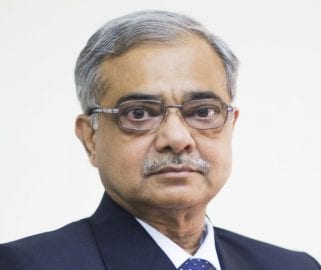By SJ Raj
An organisation is as good as its employees. Employees are the most valuable assets, and all investment in technology and business can become inefficacious if the skills and capabilities of the people involved remain underdeveloped.

The organisation’s responsibility doesn’t end with hiring people. With time, technology changes, business needs evolve, and this is where it becomes important to ensure that employees keep developing their skills. Capability development takes into consideration what is traditionally considered as professional development, such as, skills-based training, knowledge-based education, and experience, and branches out to other human aspects, like the previously acquired knowledge and skills the person brings to their role. In simple words, capability development is either helping the employees create a new capability or enhance an existing one. All in all, it is a comprehensive approach to ensuring people’s growth and development, and effectiveness in their roles with the organisation.
Why does capability development matter?
In a world where technology is evolving and business needs are changing at the speed of light, workplace skills and capabilities need to keep pace. Irrespective of the sector an organisation operates in, the success of a project relies largely on the collective capability of a team to resolve issues and make an impact.
While it is easy to say that skills need to be developed constantly to achieve success, it is not as easy to do. Employees have routine tasks and deadlines to live up to, and it can be a task to fit capability development modules into their usual workday. It thereby becomes essential for organisations to have a proper capability development plan in place to achieve:
– Conducive work-culture led by continuous learning
– Employee agility with market-ready skill sets
– Reduction in attrition and thereby, money spent on recruitment
– Engaged and effective workforce
Capability development needs a well-defined strategy
While it is a given that such strategies vary from organisation to organisation, a powerful capability building strategy is one that fits within the needs of an organisation and effectively develops the capabilities of the people working for it. Building a sustainable capability development strategy is essential and a few tried and tested measures can make a notable difference:
– Inclusive development: Involving the employees right from planning the capability development program until the final execution can ensure better results. Since the whole idea is centered on employees, creating opportunities for employee participation from design to implementation of the strategy can have a huge impact on the eventual success.
– Encourage career growth within the organisation: Once implemented, a capability development strategy can be easily aligned with the organisation’s career progression framework. This can help empower employees to drive their career growth through the acquisition of next level proficiencies and career-oriented skills.
– Including practical and real-life learning: An efficient capability development strategy must focus on the business application of the skills as learning is more effective if it is intrinsically linked to real-life scenarios. In the long run, projects attain improved results, helping organisations achieve better outcomes.
– Making feedback an integral part: Regular exchange of constructive feedback in a healthy manner can help create a conducive environment where everyone is a winner—one who gives the feedback, one who receives the feedback and the overall organisation.
A successful capability development program can help in fostering a culture of learning and development. When executed objectively and scientifically, capability development can be a clear win-win strategy for the employees as well as the organisation.

